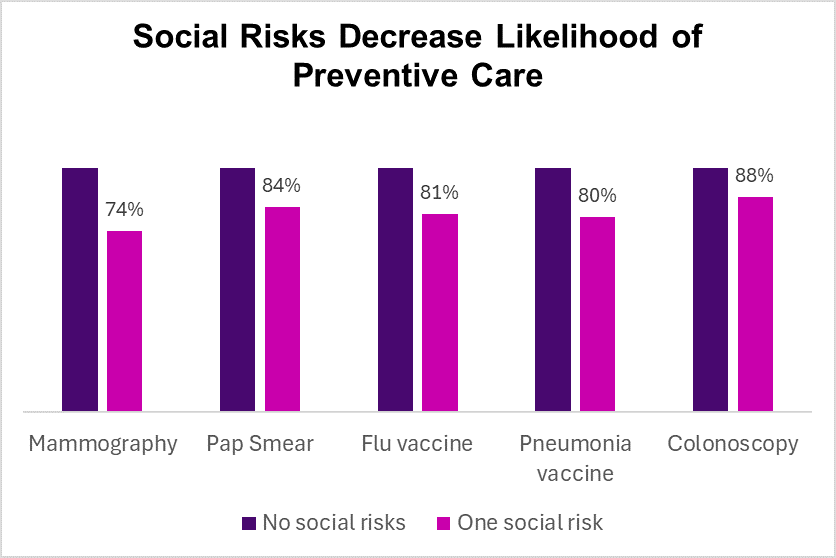Disparities in medication assisted treatment, HIV suppression and preventive care
October 15, 2024
Recent studies focus attention on disparities in treatment for opioid use disorder, HIV care, and preventive care based on where patients live. The first two studies used geolocation of redlining from the 1970s and found that patients who lived in neighborhoods that were not eligible for federally subsidized loans from the 1930s to the 1960s (Home Owners’ Loan Corporation grade D) continued to be at-risk decades after this redlining was discontinued. The third study correlates social needs with preventive care.
Source: Schroeder, et al, JAMA Network Open, October 4, 2024. This graphic shows that a single social risk factor led to between a 12% and 26% decrease in preventive care.
Finally, a third study of more than 82,000 adults showed that those with more social risk factors were less likely to receive preventive care. The risk factors examined included economic instability, lack of community, educational deficit, food insecurity, social isolation, and lack of access to care. In all instances, lack of access to care was associated with the least amount of preventive care.
Implications for employers:
Employers should be aware that their employees who live in communities with greater social needs and their employees who have greater social needs themselves are most likely to fail to receive optimal medical care.
Employers can be sure that their health plan members have access to care and communicate that much preventive care incurs no cost sharing.
This highlights the importance of plan reporting by race and ethnicity and by social deprivation index or a similar measure.
The adverse effects on health of previous discrimination can be evident even generations later.


It is sad to note there is still a disparity in treatment among socio economic groups.